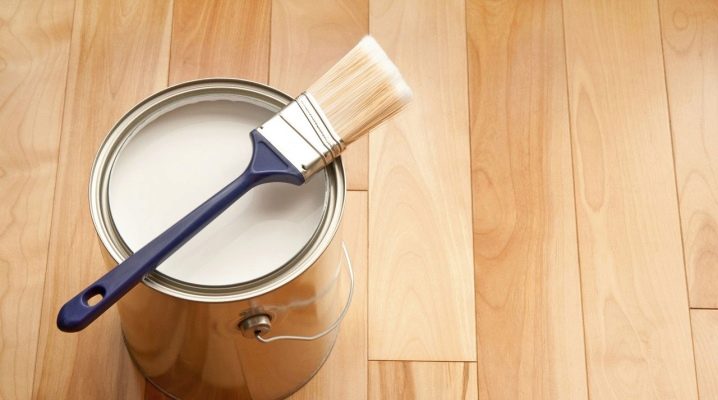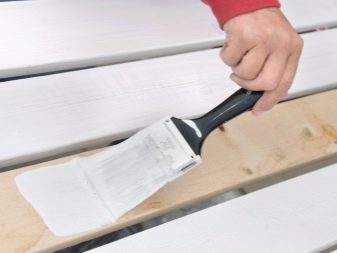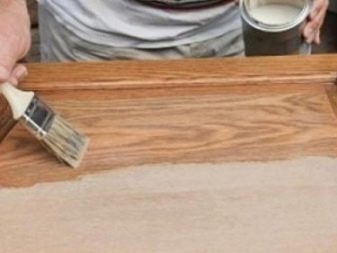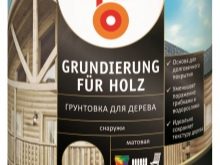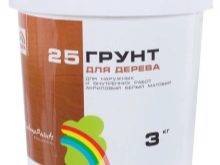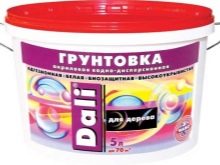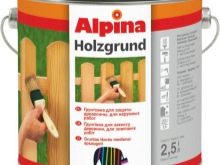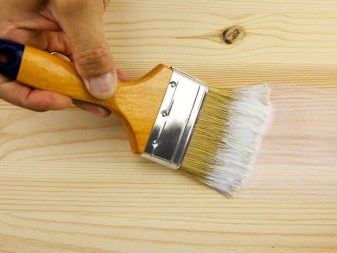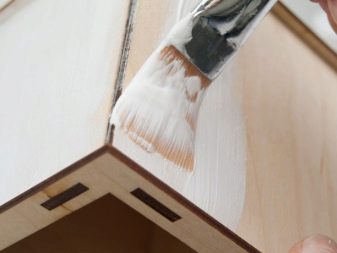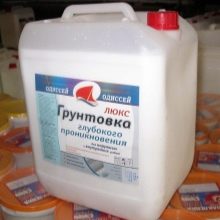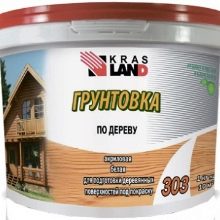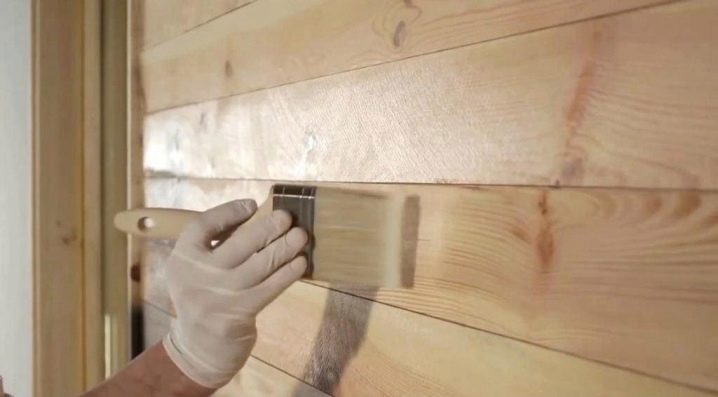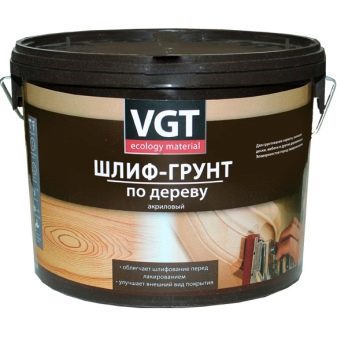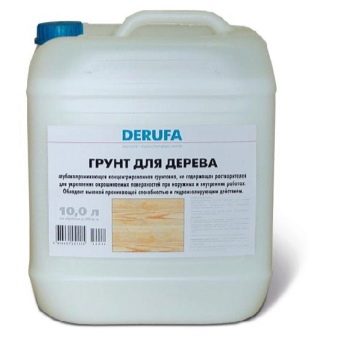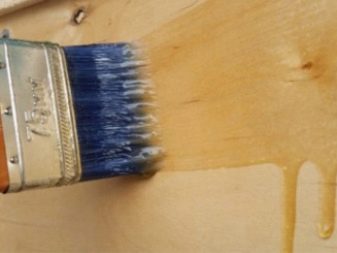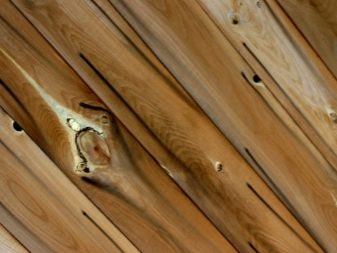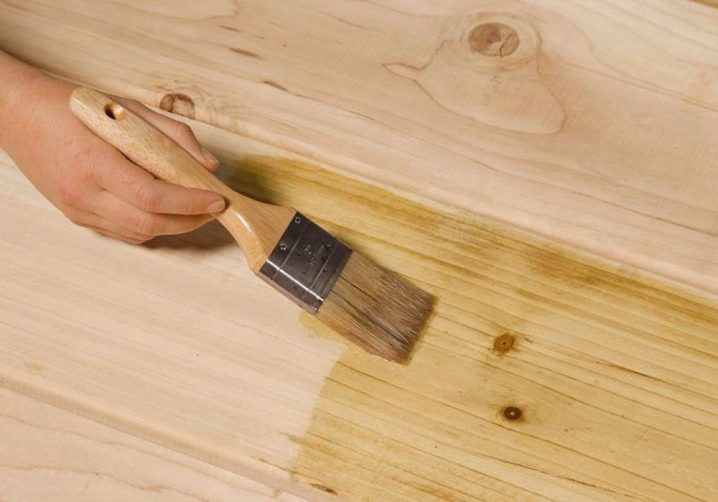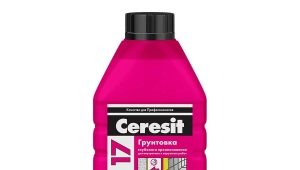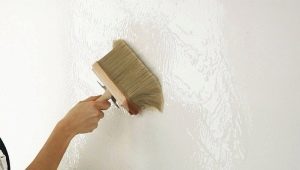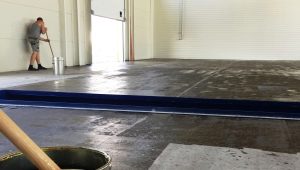Features primer for painting for wood
Among the many coloring compositions that can be used for wood, you can even get confused. But they all have one thing in common - extreme demands on the surface to be painted, enamel or drying oil. To improve the condition of the substrate, apply a special primer for painting. It is important to understand its key features, otherwise the correct choice and use of such an important mixture will not be possible.
Special features
Wood has a number of valuable properties: it is relatively light, durable, retains heat well, is aesthetically pleasing and environmentally safe, accessible and convenient to handle.
The surface of any tree species intensively absorbs the paint applied. Therefore, the primer for wood should eliminate the roughness and roughness of the outer layer, as well as reduce the absorption of paints and varnishes.An important requirement for impregnation is deep penetration under the surface and bonding of the material from the inside. A crystalline film, impermeable to water, which stops the development of rotting of the massif, appears outside on drying outside.
Species
There are a number of compounds that can be applied on a wooden base. Some of them dissolve in warm water, others are completely impermeable to liquids. The difference lies in the fact that the first type is designed to avoid the corrosion of wood, and the other enhances the hydrophobic properties of the surface to the maximum possible.
Chemical composition of emit primer:
- oil;
- acrylic;
- alkyd;
- epoxy;
- shellac wood
There are other types of primer, but these are the most used at the moment. Primer with oil mixtures should be previously painted surfaces or in need of primary impregnation. Apply the material in a single layer before painting and putty. Acrylic formulations should be applied several times, immediately after that you can use the main paint.
The alkyd look is recommended to use in cases where the tree has not previously been processed. At the same time the surface becomes extremely smooth and smoothed, the pile is eliminated.The primer containing the pigment is capable of forming a strong film with a matte sheen. Then the upper color is enhanced, which will be used for subsequent coloring. The drying period ranges from 12 to 16 hours.
Acrylic primers are recognized as universal because they can be used on all surfaces. Such impregnation has almost no specific smell, it dries quickly (60 - 240 minutes), if necessary, diluted with water at room temperature. Shellac primers are designed to smooth the surface and camouflage knots, resin pockets. They can be used to isolate soluble stains.
Epoxy and polyurethane primers - the worst option, in addition, not having a special formulation and application schemes.
Tips for choosing
One of the key points when choosing priming materials is their level of transparency. The higher it is, the greater is the ability of the designer to finish the surface. The original wood texture is emphasized with transparent formulations better than opaque. In addition, the pile does not rise, there is no need to polish the primed surface.Primers based on nitrocellulose and a mixture of rosin and casein are easy to apply, they are convenient to use, and effectively inhibit the development of mold fungi. The composition of such mixtures often include oil, glue, various types of pigments.
Modern primers necessarily contain an antiseptic component, which helps to suppress the occurrence of bacterial colonies, as well as means that prevent insect aggression. It will not be possible to replace the priming mixture with a combination of paint and solvent: this will significantly impair the quality of the finish and will be significantly more expensive.
To choose the right primer, you need to analyze several circumstances:
- conditions for applying a primer composition;
- exact location of the surface;
- time you can spend on work.
Some primers are designed to work indoors, others are suitable for the preparation of surfaces of facades on the street. Open terrain complicates drying. At high humidity, preparation time may increase significantly. That is why it is necessary to use mixtures with enhanced hydrophobic characteristics.It is not necessary to treat wooden floors with such coatings (except for particularly wet areas of the house). In such cases, it is advisable to use alkyd mixtures, a long drying which pays off resistance to water and the ability to limit the only layer of application.
Priming a tree for lacquer is somewhat more complicated: for this purpose, only completely transparent mixtures are suitable. In such cases, it is advisable to use a liquid wax, an aerosol, or an industrial-type primer. You can also treat the surface with wax, talc, or wood flour.
There are a number of recipes for priming self-made formulations, but it is necessary to select a specific option very carefully, as an error can lead to a deterioration of the aesthetic appearance.
How to apply?
To acrylic paint or enamel lay on the tree well, you need to take care not only about choosing a good primer. Wood needs to be polished, to eliminate the visible and masked defects, to assess the absorption of moisture. These data allow you to choose a primer, getting ready for work. All priming compositions (with the exception of aerosols) are applied to the tree using brushes or rollers.
The method of application is determined by:
- substance density;
- the degree of homogeneity;
- quality and structure of the coated surface.
The old paintwork (it does not matter if it is applied to a staircase or cabinet, sill) must be completely removed. The only exception to this rule is paint, which coincides with the new coating (provided that the initial layer is strong and does not have any bundles). It is possible to degrease the basis with turpentine, acetone and universal washing compositions. The resin cavity is spilled with the chosen substance and the resulting solution is collected using a swab.
Further, the wood is supposed to cover the antiseptic priming composition (preferably with the addition of flame retardants).
Acrylic primer is used in the form of a suspension that is operable at a temperature of from +5 to +30 degrees. If this requirement is not fulfilled, the rate of drying is reduced, as is the quality of the surface impregnation. To coat chipboard, a primer composition of deep penetration is required. Each next layer should be used at least 2 - 3 hours after the previous one. Then the consumption of material decreases markedly.
If you do not save, apply more often, the primer will penetrate deeper. If you buy an inexpensive primer and apply it twice, you can save money by ensuring a decent level of coverage. Apply primer for wood - an important thing. You should take her choice seriously. This will affect surface adhesion.
You will learn more about primer for painting for wood in the following video.
